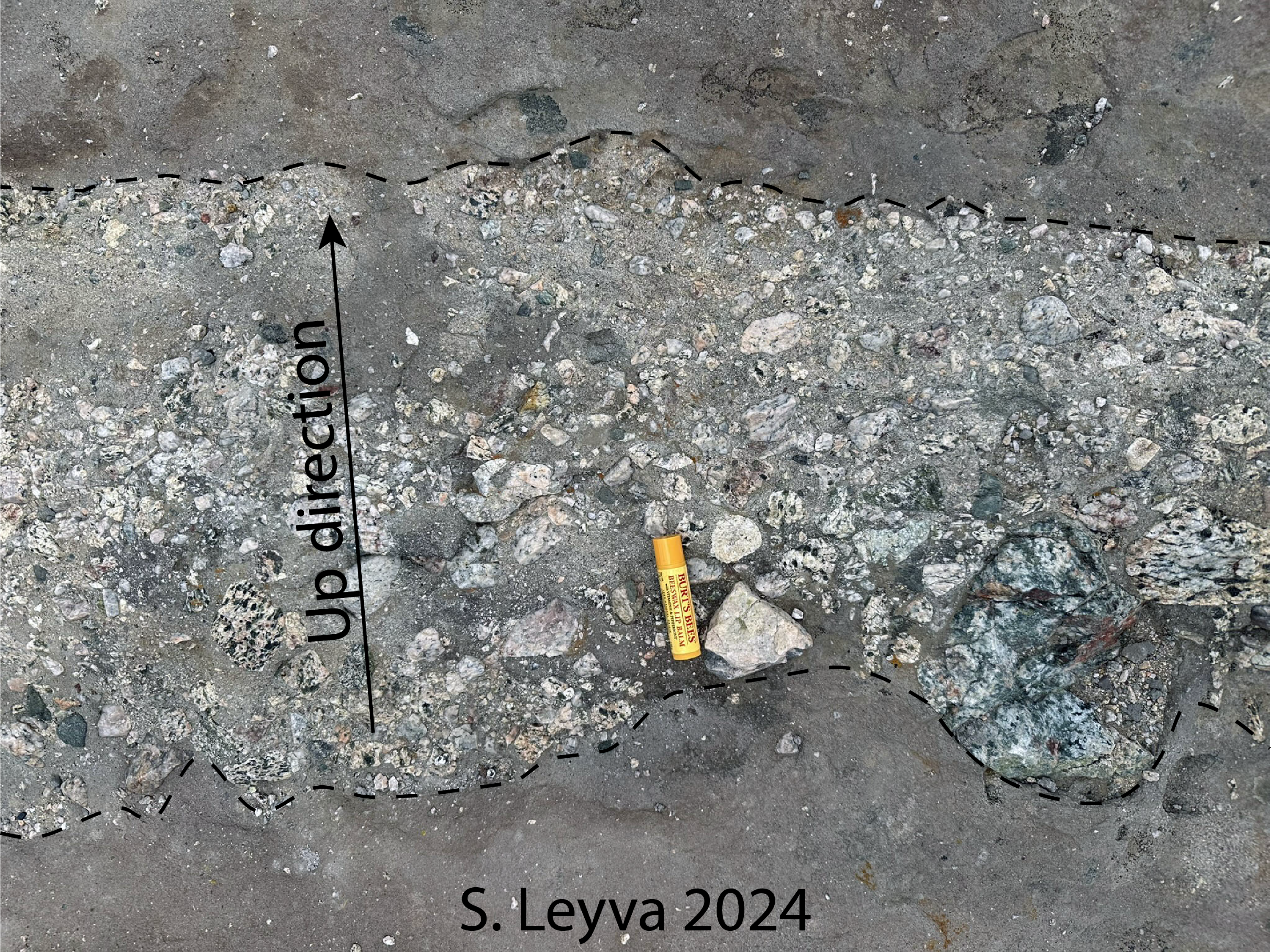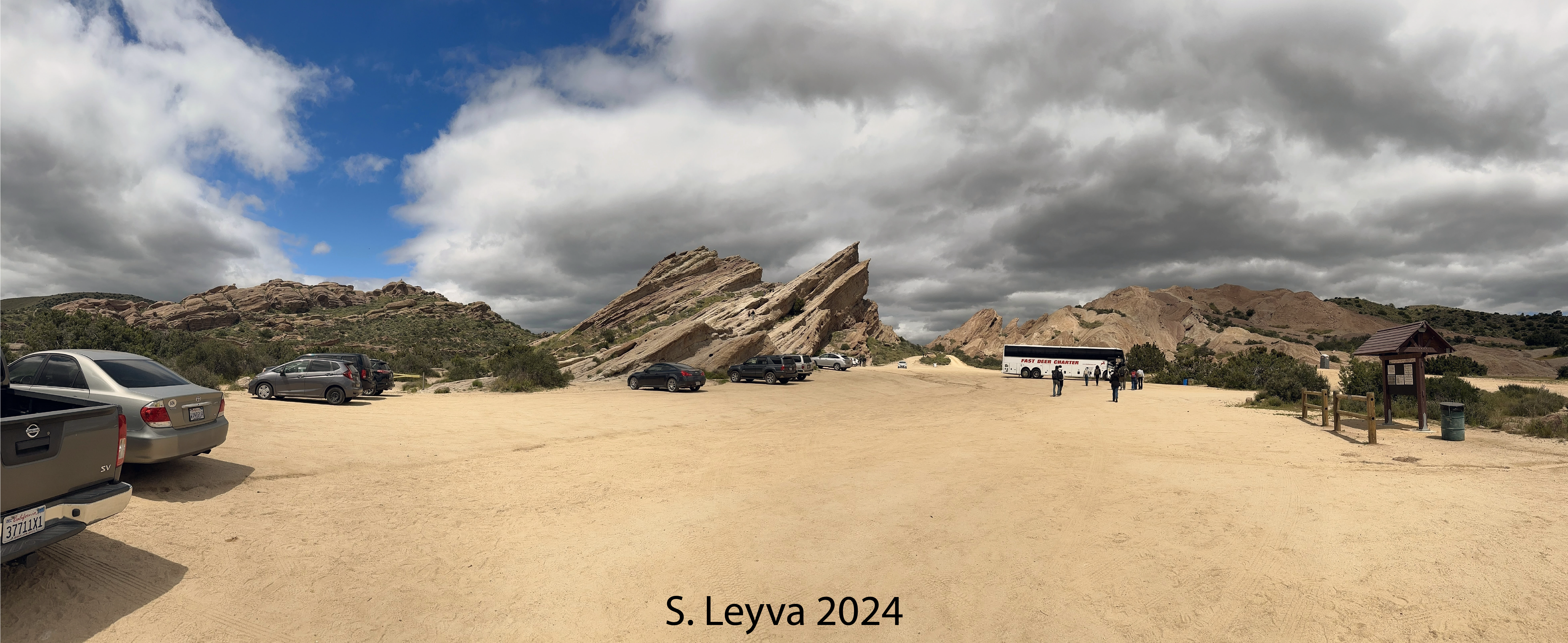Stop #7: Vasquez Rocks Park |
The rocks in Vasquez Park are mainly composed of sandstone and conglomerate that was deposited 20 to Below is a close up of some of the beds exposed in Vasquez Rocks. At the bottom and top are silty sandstone bed with 3-10 mm rounded granitic clasts. In between is a conglomerate layer, comprised of 10 - 300+ mm granitic clasts thought to have derrived from erosion of the San Gabriel Mountains to the east. Note that the top and bottom of the layer are irregular, suggesting that the conglomerate layer was deposited in a high energy event such as a flash flood, followed by another high energy event which deposited the sandstone layer above.
Recall the Prinicples of Relative Dating. Sediments are typically laid down in horizontal layers (Principle of Original Horizontality). But, the beds in the Vasquez Rocks area are most definately not horizontal! Dips are as much as 55º SW in the northern part of Vaquez Rock Park and shallow to around 20º W in the southern portion. If the sediments were originally horizontal, how, once they lithified into rocks, did they become so highly tilted? Earthquakes on the nearby Elkhorn Fault and Agua Dulce Fault caused the rocks to be tilted into the position they are in today.
|


